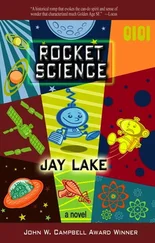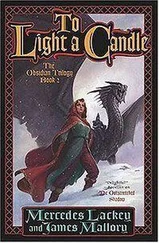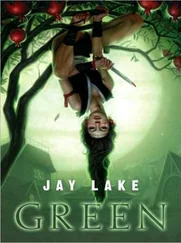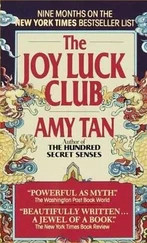No, she had done the cutting open. But those two would have killed as easily as stared them down. What else could she have done?
“Let me have a look,” Laris said sternly.
Radko’s face was suffused with embarrassed shyness, and she could see the boy he had once been, not so far behind his eyes. He still shivered, almost violently now. Cold? Fear? Pain?
For Solis, Laris thought, and pulled Radko into her arms. They eased back onto the narrow bed together, and lay a long time until his weeping stopped. She found herself in no mood to let loose of him, and he did not seem inclined to pull away, so they held one another through the watches of the night.
* * *
Morning found them still abed. Laris had not slept well, but Radko had positively snored the night away in her arms. They were still clothed—she was four coppers to the good, and no trace of his seed within her sweetpocket, or her more fundamental regions, to show for it. Was there a living to be made holding on to sad, silent men?
Or just this one.
Radko opened his eyes, blinked, yawned. “We never did say good-bye to Solis,” he muttered.
She kissed his forehead. “I think we already have.”
“Hmm.” A grubby finger traced her nose. “I got to work soon. What about those men?”
Laris shrugged. “They were after the goddess. She will protect, or she will perish. I survived the death of Marya, I can survive the death of Mother Iron.”
“Mother Iron’s never going to die,” Radko said with an almost-pleased finality.
The point was well taken. The new goddess was an old, old figure, surviving centuries in the tunnels beneath Copper Downs, deity from an era so long past as to be forgotten, only lately risen to her new role. Laris laughed, a little. “Then perhaps I shall never die, either.”
“Will I see you again?” he asked plaintively.
Laris glanced away at the light leaking through the shutters. Her emotions were complicated, swirling. He was not so bad. And that scent. Truly, Neela had been right. Solis had been crying for Radko.
“My work is in the evening…” The man was used to prostitutes, after mooning over Solis so long.
His face fell, so she added hastily, “But we will find a time.”
Radko struggled to his feet, smiled crookedly, and limped out her door, heading for his own day’s wage. Laris pulled her robe about her and contemplated the four copper taels and the knife on the floor next to her bed, all neatly wrapped in a scrap of lace. She did not recall doing any such thing last night. She did not even own any lace.
“Solis?” she said softly. “Mother Iron?”
There was no answer. That was good enough for Laris. She rolled back into her thin covers and breathed in Radko’s scent, then settled in for a few more hours of sleep. For the first time in months, she was ready for a quiet journey through the countries of her dreams.
This is the story Jeff and Ann hated. Luckily for me, not everyone else did.
One of the more controversial pieces in the collection is a print by the famed forger of art, currency, and graffiti, Alois Redpath (b. Minot, North Dakota, 1936; d. Xian, China, 1994), who signed his work Redman. Redman’s most famous work, of course, was an exact replica of a section of the Berlin Wall, built overnight on a lot in East Berlin in the summer of 1965. The Stasi are said to have authorized an assassination order against the artist in retaliation, but by then he was living in a commune just outside Phuket, Thailand, beyond even the long reach of the East German secret police.
This print, known as Unchambered Heart, is said to be a copy of one of the lost paintings of Mercer Amistad (b. Taos, NM, 1934; disappeared in Papua-New Guinea, ca. 1971, possibly infected with kuru). Amistad and the infamous gray market art collector Dr. Bentley Maxon toured Europe together in 1964 and 1965, seeking medical curiosities that had been stolen by the Nazis during World War II and secreted in a series of illicit museums operated by Himmler’s notorious Section Goat. The secretive paramilitary unit was responsible for much of the Nazi psychic war effort. Himmler and his spiritual advisors placed great faith in the accrued mystical powers of such artifacts as the Bottled Siamese Twins of Turin, the Bile Ducts of St. Boniface, and the sadly distorted skeleton of that Swedish unfortunate known as the Walrus Man.
Amistad’s interest in such material ties into her long history of representing the unspeakable through the lens of art. Maxon’s pursuits at that time naturally go without saying among the cognoscenti of his life and work. We can only speculate, of course, but Amistad and Maxon could surely have met Redman somewhere in Mitteleuropa during the time their travels overlapped. Internal evidence in the print suggests it may have used another artwork or sketch as its source, which would be consistent with Redman encountering a Bohemian artist wandering Europe with her sketchbook, in the company of a mad doctor.
Controversy arises from two sources. First, the provenance of the print is dubious. Maxon’s own records regarding the piece are uncharacteristically vague, given the doctor’s more typical prolixity. This leaves open the possibility that Unchambered Heart is a forgery of a forgery, or a pseudo-copy. Second, Maxon’s interest in the print seems to be connected to his brief and unfortunate tenure with the transgressive German performance art troupe known as Golden Dusk, an episode in the good doctor’s biography for which he has more than once publicly stated his deep regret.
In other words, an unlikely vignette of which to hang a reminder in the front hall of Maxon’s Long Island conservatory.
—Unsigned curator’s notes on
Unchambered Heart, from the unpublished catalog of the Roosevelt Island Medical Deviance Exhibition of 1997
The venue was the basement of a pawnshop that had once served as a bank, centuries earlier. Barrel-vaulted ceilings made for small rooms separated by iron bars in the oddest places. Curious drains interrupted the floor periodically, as if the place also included “abattoir” in its résumé.
Maxon circulated easily through the curled smoke. He identified the usual marihuana, cloves, and tobaccos, but also several rarer hallucinogenic substances. By the end of the evening the crowd was going to be very wired indeed.
The performers had yet to identify themselves, so the audience mingled anonymously. Many wore domino masks or face paint to obscure their identity. Mostly young and beautiful, these were the children of Europe’s post-war money. And in truth more than a few scions of wealth built on gold fillings picked from Jewish corpses during the war.
Those latter were of more interest to him and Merce, of course. He had permitted himself to be distracted by the unusual and bizarre, as was his wont, but neither of them had lost sight of their essential objectives.
A pair of men wrapped themselves into a clinch in a dark corner—American officers from the look of their bodies and the cut of their hair. Maxon smiled indulgently. If any place might be safe from persecution, it was the moveable space that was instantiated whenever these events were held.
He pushed into the chamber where the main tank was located. It reeked of rust, saltwater, and a thick, animal musk. Ratty red velvet curtains remained drawn over the glass, but the low, sonorous rumblings from within were promising. Likewise the blood-crusted chains hanging from the ceiling. A winch had been bolted up there as well. Russian military surplus, and capable of hoisting several tons, if he was any judge.
Maxon noted a tense young man who held himself out from the increasingly drunken and naked crowd. No cameras were permitted in here, of course, but the fellow sketched furiously with charcoal pencil in a loose-bound book of foolscap paper.
Читать дальше











